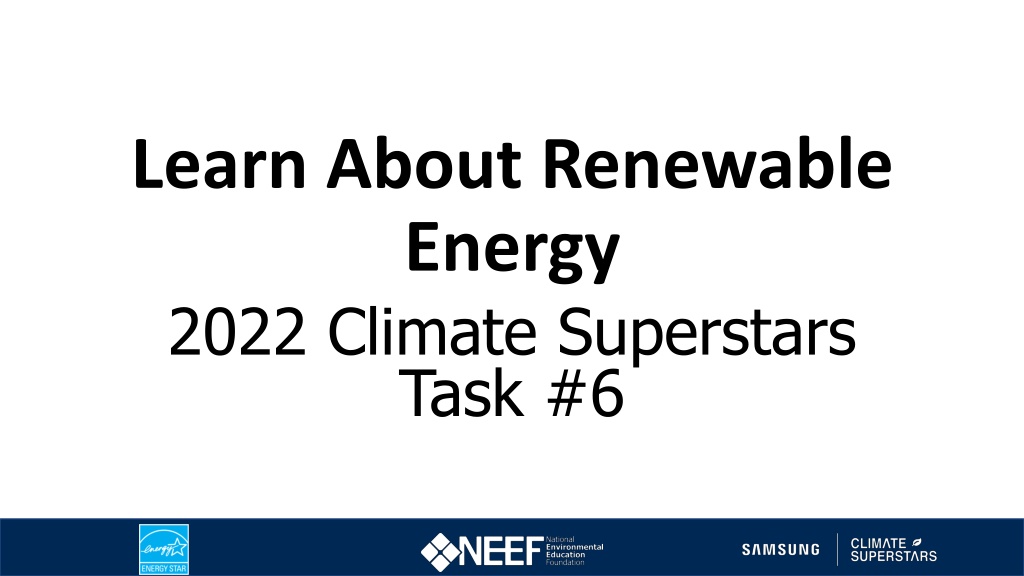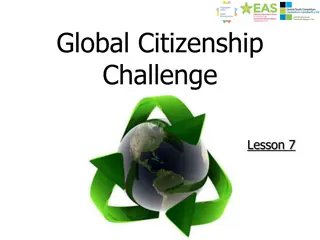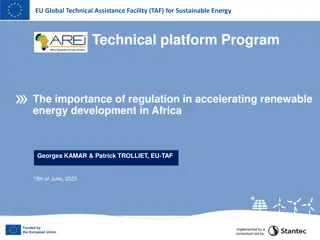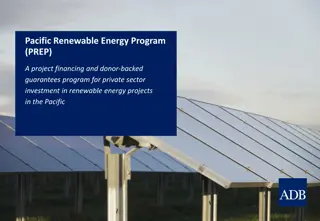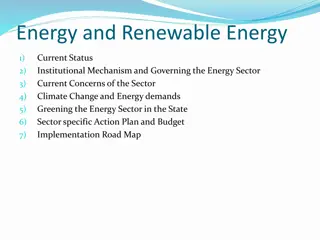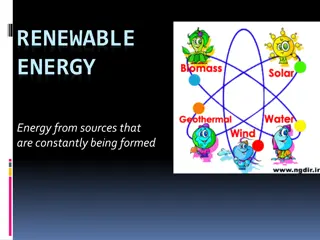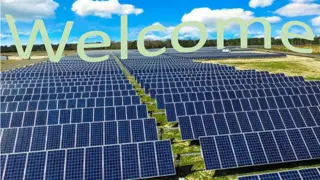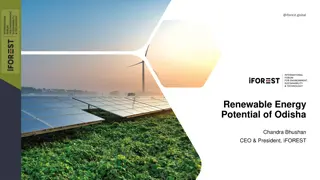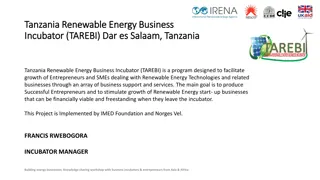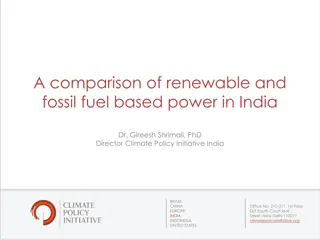Understanding Renewable Energy and its Benefits in 2022
Renewable energy sources like wind, waves, tides, sunlight, geothermal heat, and biomass play a crucial role in combating climate change by reducing greenhouse gas emissions. This task educates about the differences between renewable and non-renewable energy sources, the benefits of renewables, and the diverse mixes of renewable sources used for electricity generation based on location. The content also explores the various types of renewable energy such as biomass, geothermal, hydropower, solar, and wind, highlighting their contributions to sustainable energy generation. Watch the accompanying video to learn more about the advantages of renewable energy sources and their positive impact on the environment. Discover how regions like Texas and California utilize renewable energy for electricity generation in unique ways, showcasing the potential and versatility of clean energy solutions.
Download Presentation

Please find below an Image/Link to download the presentation.
The content on the website is provided AS IS for your information and personal use only. It may not be sold, licensed, or shared on other websites without obtaining consent from the author. Download presentation by click this link. If you encounter any issues during the download, it is possible that the publisher has removed the file from their server.
E N D
Presentation Transcript
Learn About Renewable Energy 2022 Climate Superstars Task #6
Learning Objectives After completing this task, you will be able to Explain the difference between renewable and non- renewable energy sources. State the main benefit of renewable energy. Explain why there are different mixes of renewables used in generating electricity based on location.
Vocabulary Biomass is burned directly in steam-electric power plants, or it can be converted to a gas that can be burned in steam generators, gas turbines, or internal combustion engine generators Geothermal uses steam turbines connected to a generator Hydropower uses flowing water to spin a turbine connected to a generator Solar two types: photovoltaic (PV) and solar-thermal power; PV conversion produces electricity directly from sunlight, a solar-thermal power system uses steam turbines connected to a generator Wind uses moving air to spin a turbine connected to a generator
Watch this short video to find out what the benefits of renewable energy are and how it can help humans combat climate change. Video for climate 101 Renewable Energy https://youtu.be/1kUE0BZtTRc
Benefits of Renewable Energy Sources Wind, waves, tides, sunlight, geothermal heat, and biomass are sources of energy that are replenished without human intervention and on a human timescale. That is why energy derived from these sources is called renewable. Renewables can replace conventional fuels such as oil, coal, and natural gas in electricity generation, heating, transportation, and off-grid energy services. Renewable energy sources play an important role in reducing greenhouse gas emissions. Using renewable energy to generate electricity can reduce the use of fossil fuels, a major source of greenhouse gas emissions. Use the following graphs to discover the mix of energy sources used to generate electricity in different regions of the country.
Texas Electricity Generation by Energy Source In Texas, wind-based generation leads, natural gas generation follows.
California Electricity Generation by Energy Source In California, solar energy supplies electricity during the day, natural gas at night.
Northwest Electricity Generation by Energy Source In the Pacific Northwest, hydro-based generation leads, natural gas and coal follow close behind.
Do some research to learn the following: How much renewable energy does your local power plant or utility use to produce electricity? Check all that apply. How does your local energy mix compare to the overall averages for the United States as a whole? Action Item Local energy mix to generate electricity: Biomass Geothermal Hydropower Solar Wind
